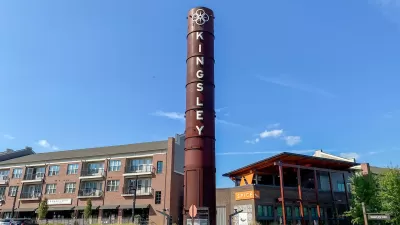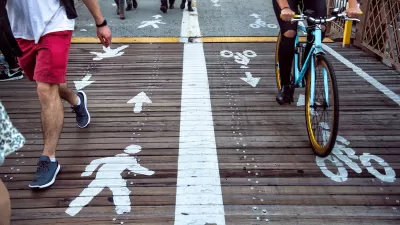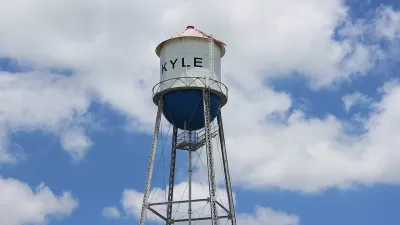A fragmented network of sidewalks is commonplace in the suburbs of Hennepin County, Minnesota. Mary Jane Smetanka reports on controversial efforts to fill in the gaps and retrofit these suburban neighborhoods as walkable places.
In the suburban communities of St. Louis Park, Hopkins, and Edina, a lack of sidewalks leaves residents with few safe solutions for reaching their destinations on foot. Cities like Hopkins historically had sidewalks, but when homeowners were held responsible for their maintenance, many simply removed them, rather than pay for their continual upkeep. In other places, changing policies and piecemeal sidewalk building by individual developments left a fragmented network.
However, as residents demand more opportunities to ditch their cars and connect to their neighbors, these communities are responding with sidewalk-building programs. “[Walkable communities] are a lifestyle asset, and cities are hip to that,” says John Archer, professor at University of Minnesota. “We have to keep attracting people who want to move here, and make this an attractive place, because people who are moving in don’t have the same affections that the old people did.”
Yet, not everyone is on board. “Sidewalks are difficult projects,” Hopkins City Engineer John Bradford said. “Everybody loves the sidewalk — on the other side of the street. That makes for contentious projects.” For long-time residents who’ve managed without a sidewalk for 50 years, the idea of replacing a strip of lawn with concrete is hard to swallow.
St. Louis Park will proceed with its 10-year plan to put a sidewalk within a quarter mile of every resident, although its project list was cut back 20 percent due to objections from residents and physical barriers, notes Smetanka.
FULL STORY: Sidewalks gain in the Twin Cities suburbs, even as some residents protest

Planetizen Federal Action Tracker
A weekly monitor of how Trump’s orders and actions are impacting planners and planning in America.

Maui's Vacation Rental Debate Turns Ugly
Verbal attacks, misinformation campaigns and fistfights plague a high-stakes debate to convert thousands of vacation rentals into long-term housing.

Restaurant Patios Were a Pandemic Win — Why Were They so Hard to Keep?
Social distancing requirements and changes in travel patterns prompted cities to pilot new uses for street and sidewalk space. Then it got complicated.

In California Battle of Housing vs. Environment, Housing Just Won
A new state law significantly limits the power of CEQA, an environmental review law that served as a powerful tool for blocking new development.

Boulder Eliminates Parking Minimums Citywide
Officials estimate the cost of building a single underground parking space at up to $100,000.

Orange County, Florida Adopts Largest US “Sprawl Repair” Code
The ‘Orange Code’ seeks to rectify decades of sprawl-inducing, car-oriented development.
Urban Design for Planners 1: Software Tools
This six-course series explores essential urban design concepts using open source software and equips planners with the tools they need to participate fully in the urban design process.
Planning for Universal Design
Learn the tools for implementing Universal Design in planning regulations.
Heyer Gruel & Associates PA
JM Goldson LLC
Custer County Colorado
City of Camden Redevelopment Agency
City of Astoria
Transportation Research & Education Center (TREC) at Portland State University
Jefferson Parish Government
Camden Redevelopment Agency
City of Claremont





























